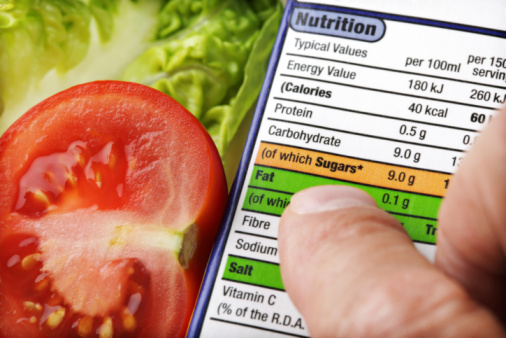Once upon a time, food was fairly self-explanatory. You pretty much knew that a chicken was a chicken, vegetables were vegetables, and there was only one kind of milk to choose from -- the kind that came out of a cow -- unless you happened to prefer the milk of some other mammal.

But these days, things are a little more complicated. How do you really know what goes into a box of cereal? What do all of those impressive-sounding labels really mean?
Below, I’ve broken it down into two categories: claims that food companies make and ingredients you should avoid.
Claims that Food Companies Make:
- Natural or Organic: Natural just means the product does not include synthetic or artificial ingredients. That’s good in the sense that you want to avoid consuming as many chemicals as possible, as many of them have been linked with a number of illnesses (see the list of ingredients to avoid, below). Organic means the food is grown without fertilizers, insecticides, herbicides, or growth hormones according to USDA standards. Sometimes it’s worth it to pay more for organic and sometimes it isn’t, based on how full of pesticides the inorganic food tends to be. In general, you want to buy the “dirty dozen” fruits and veggies organic, and you can save your money on the “clean fifteen” (http://www.ewg.org/foodnews/summary/).
- Lean and Extra Lean: These terms apply to meat, poultry, and fish. Lean means there’s less than 10 grams of fat, 4.5 grams or less of saturated fat, and 95 mg cholesterol per 100 grams. Extra lean means less than 5 gm fat, less than 2 grams saturated fat, and less than 95 mg cholesterol per 100 grams. It’s a good idea to choose lean meats, as they decrease the risk of cancer otherwise associated with other meats. But it’s most important to choose organic and free range meats if at all possible, because free range meats contain a better ratio of omega 3 to omega 6 (decreasing the risk of many inflammatory diseases), and organic meats do not contain growth hormones.
- Enriched and Fortified: Both of these terms mean that vitamins and minerals were added to the food, but fortified means more of the nutrients naturally found in the food were added, while enriched means that vitamins and minerals that were lost during processing were added back. But don’t think that the food itself is healthy just because the company added a few extra nutrients. If a food needs to be enriched in the first place, it’s processed, and processing leads to a number of other problems (see the list of ingredients to avoid, below). Also beware of the high sugar content commonly found in processed foods.
- Heart Healthy: This is a bit of a catch-all term, meaning the food is low in calories, whole grain, fat-free, and/or made with oil instead of saturated fat. The label is usually unregulated though, so you should take it with a grain of salt…no pun intended.
- Low-Fat and Fat-Free: Low-fat means three grams of fat or less per serving size. Fat-free means what it sounds like: only traces of fat exist in the food or none at all. If you choose these foods because you’re trying to lose weight, though, beware that fat-free does not mean low-calorie. In fact, for purposes of weight loss it’s more important to avoid sugar and processed carbohydrates than fat. For more information, see here: http://www.drlaurendeville.com/articles/get-healthy-for-the-new-year/.
- Whole Grain: This means that all three major components of the grain kernel remain in the food: bran, germ, and endosperm. The bran contains fiber and B vitamins, magnesium, phosphorus, iron and zinc. The germ contains Vitamin E, selenium, thiamine, iron, magnesium, phosphorus, zinc, and protein. The endosperm contains protein and carbohydrates.
When grains are milled, they lose the bran and the germ, retaining only the protein and carbs from the endosperm. The lack of fiber in processed grains means that the remaining carbs hit your bloodstream almost immediately, and they act basically just like sugar. Additionally, the loss of the bran and germ removes most of the nutritional value of the grain. So are whole grains a better idea than processed? Emphatically, yes.
- Gluten-Free: Gluten is a protein found in the germ (see above) of wheat, rye, barley, and several other grains. Gluten intolerance and Celiac Disease are both relatively common, and especially for Celiac patients, total gluten avoidance is critical. That said, if you are not gluten sensitive, you don’t really need to avoid it.
